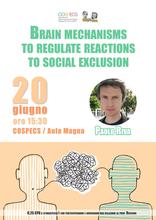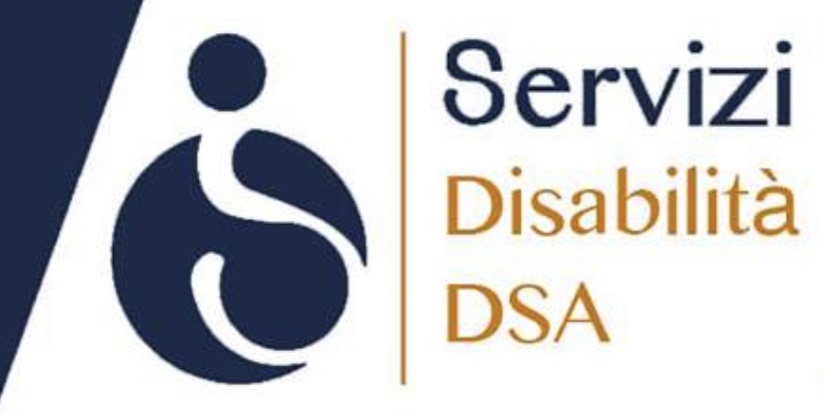Il sito del COSPECS non è più aggiornato dal 2023. Vai sul nuovo sito
Brain Mechanisms to Regulate Reactions to Social Exclusion
Lunedì 20 giugno 2022, a partire dalle ore 15:30, presso l’Aula Magna del Dipartimento COSPECS, si terrà un seminario dal titolo “Brain mechanisms to regulate reactions to social exclusion” tenuto dal Prof. Paolo Riva, Professore Associato presso il Dipartimento di Psicologia dell’Università degli Studi di Milano-Bicocca.
Le studentesse e gli studenti del corso di studio L-24 che parteciperanno e invieranno al Dott. Patrice Rusconi (patrice.rusconi@unime.it) una relazione (massimo 250 parole) relativa al seminario potranno acquisire 0,25 CFU.
Per le persone impossibilitate a partecipare in presenza è possibile richiedere l’accesso a Teams scrivendo al Dott. Patrice Rusconi (patrice.rusconi@unime.it).
Il seminario si terrà in italiano. Per maggiori informazioni si vedano l’abstract e la bio di seguito.
Social exclusion is an experience that most humans face daily. Social exclusion, especially when prolonged, can change the brain, undermine health, and reduce life expectancy. However, mostly relevant to these negative outcomes is how people respond to it. According to a dual-process approach, there are automatic (i.e., fast, ungoverned) and controlled (i.e., slower, restraining) mechanisms that arise and interact with one another to achieve self-regulatory goals. Social exclusion’s automatic components in the brainstem, anterior cingulate, and insular cortices are counterbalanced by the controlled, regulatory function of the prefrontal cortex. In particular, the right ventrolateral prefrontal cortex (VLPFC) is a brain region that appears to be critical for regulating social exclusion. In this talk, I will present findings from a set of experiments testing the hypothesis that modulating the cortical excitability of the right VLPFC may regulate emotional and behavioral responses to social exclusion. Specifically, in Study 1, we found that increasing the cortical excitability of the right VLPFC (rVLPFC) reduced social pain following exclusion (Riva et al., 2012). Study 2 tested the opposite effect and found that decreasing the global neural activity of the rVLPFC increased negative emotions following exclusion (Riva, Romero Lauro, Vergallito, et al., 2015). In the latter study, we applied the same cathodal stimulation over a control region (the right posterior parietal cortex; rPPC) and found no effects on people’s emotional reactions. Study 3 found that anodal stimulation over rVLPFC reduced behavioral aggression elicited by rejection (Riva, Romero Lauro, DeWall et al., 2015). Adopting the same technique, a reduction in aggressive responses was also found following exposure to violent media (Study 4 – Riva et al., 2017). Finally, I will present data from an ongoing TMS-EEG study to understand how anodal tDCS over rVLPFC modulates the brain responses to a short manipulation of social exclusion (vs. social inclusion). In doing so, we explored (1) the excitability and connectivity changes of cerebral areas functionally and structurally connected to rVLPFC (when it is directly stimulated by tDCS) and (2) the relationships between electrophysiological changes and subjective feelings linked to inclusionary status conditions. Overall, these studies suggest that the right vLPFC plays a key role in regulating responses to social exclusion and that it is possible to up-regulate and down-regulate reactions to social exclusion by modulating the cortical activity of the right vLPFC. These modulatory findings fit well with the critical role of the vLPFC in self-regulation and inhibition of many other impulses such as gambling, substance abuse, and poor financial decisions.
Paolo Riva is an Associate Professor at the Psychology Department of the University of Milano-Bicocca (Italy). He is the Director of the Social Connections & Technology Lab (https://connectlab.psicologia.unimib.it/). His research interests lie broadly in social influence processes with a specific focus on the need to belong and its threats, including social exclusion, ostracism, and rejection, examining the consequences of exclusion and the possible strategies to buffer against and reduce its effects. He currently explores the impact of digital technologies on social connections and isolation processes, social exclusion in real groups, and brain mechanisms involved in emotion regulation following exclusion.
Ultima modifica: ggalletti@unime.it, 10.06.2022 - 13:07







